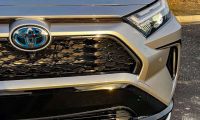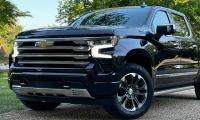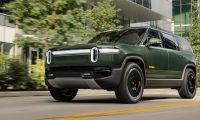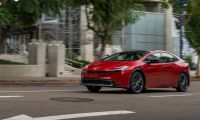If you are one of the hundreds of thousands of Americans who purchased an EV this past year, congratulations! You will not regret it. Most EV owners are very satisfied with their purchase. However, with winter headed our way, range anxiety and charging challenges may prove stressful for new EV owners in cold weather. Physics is just unkind to EVs. Here are the three best ways to extend the range of your EV in winter, starting with the most simple and working our way down the list. These methods will work whether you have a fancy Hyundai Ioniq 5 or an affordable Chevy Bolt EUV.
Related Story: 5 Reasons Battery-Electric Vehicle Road Trip Range Stinks
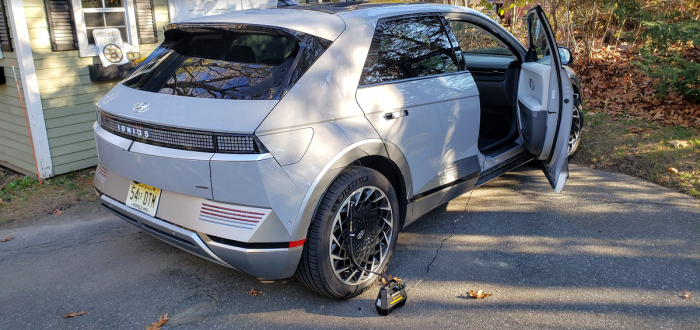
EV Range Extension - Pump Up Your Tires
Rolling resistance is a range killer in EVs. That’s why most EVs use special tires designed to help manage this problem. Even with modern tire technology, a tire that is set to a pressure below the manufacturer’s recommendations will cut your range.
As winter comes blowing in and temps drop, physics dictates that the pressure of your tire will decrease. And it doesn’t make any difference if you use nitrogen or compressed air. Gases change volume when temps drop. The amount of pressure reduction you will see is roughly one psi for every 10 degrees F that the temp comes down. It works the opposite way as well of course.
The net effect of this is that if your tires were inflated in a nice warm shop the last time you had your car serviced, let say at 70 F, and now it’s 20F, the tires have lost about 5 psi of pressure. Put it back! On a cold morning before you’ve driven the car, read the label posted on your driver’s side door jam. The pressure will be listed there. Inflate your tires to the proper set point. Since the set point is listed as “Cold inflation pressure,” you do this when the car is cold and the tires have not warmed up. Tires add about two or three psi when you drive because they get warner due to friction.
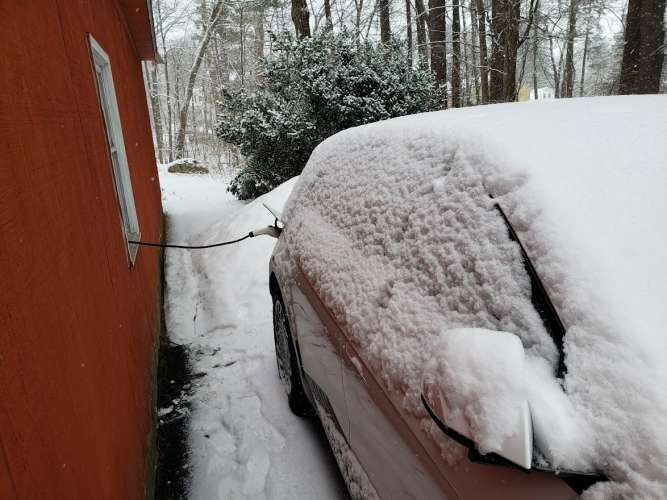
EV Winter Range Extension - Always Be Charging - Condition Your Cabin
Remember this “ABC.” Always be charging. In winter, charging times are slower and your battery will offer you less range miles at a given state of charge. Cold batteries and cold cabins contribute to shorter ranges. You can offset this somewhat by always being on the charger. The car will keep its battery at its best operating temperature using the power you provide rather than its own battery charge.
Use your vehicle’s cabin preconditioning. By warming up the cabin while you ar eon the charger, you reduce the energy needed to be pulled form the battery while you drive. This leads us to our last suggestion.
Maximize EV Range In Winter - Easy On the Heat
When you operate the heat in a battery-electric vehicle you are using your battery to make the car and your body warmer. Some vehicles have a more efficient heating system called a heat pump, and others use electric resistance heaters. Whichever you have, using it less will prolong your range.
Read your manual’s section on heating the cabin. There are neat tricks you can employ. Most EVs can direct the warmth toward just the driver if you are alone sparing a few electrons. Use your seat heater and steering wheel heater if you have them. They provide heat directly to where it is needed most. Wear a layer like a sweater or fleece vest when driving in winter. This small adaptation can add meaningful range to your EV in winter.
If you have any winter range extending tricks, please feel free to offer them in the comments section below so that fellow EV owners can benefit.
Images by John Goreham
John Goreham is a long-time New England Motor Press Association member and recovering engineer. John's interest in EVs goes back to 1990 when he designed the thermal control system for an EV battery as part of an academic team. After earning his mechanical engineering degree, John completed a marketing program at Northeastern University and worked with automotive component manufacturers, in the semiconductor industry, and in biotech. In addition to Torque News, John's work has appeared in print in dozens of American news outlets and he provides reviews to many vehicle shopping sites. You can follow John on TikTok @ToknCars, on Twitter, and view his credentials at Linkedin
Re-Publication. If you wish to re-use this content, please contact Torque News for terms and conditions.








